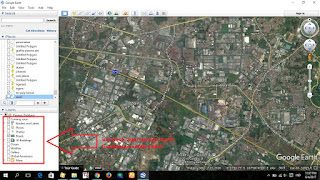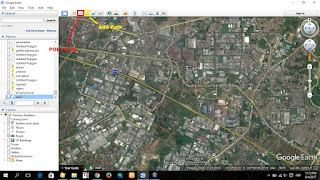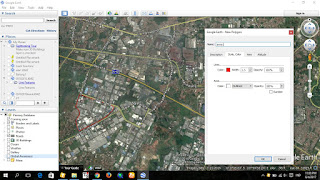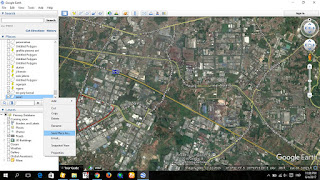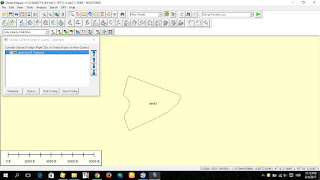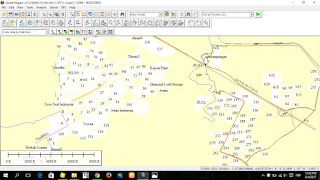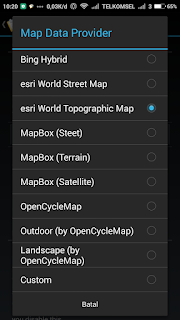Editor's Note: Indonesia, surrounded by active subduction zones, has experienced a number of large earthquakes over the last couple of centuries, including the 2004 M9.1–9.3 Sumatra-Andaman earthquake that generated a devastating tsunami. However, the worst may be yet to come, particularly for the densely populated and relatively prosperous island of Java, where the risk of high losses from earthquakes and tsunamis is steadily growing.
The thousands of islands that make up the Republic of Indonesia are surrounded by several tectonic plates, including the Indo-Australia plate, the Pacific plate, the Philippine Sea plate, and the Sunda plate (Figure 1). Their rapid convergence toward the Sunda plate has created volcanically and seismically active subduction zone faults—more than 9,000 km (6,600 miles) in total—along the island arcs, from western Indonesia eastward to the Philippines. The Southeast Asia region also hosts some of the largest active crustal faults in the world, such as the Sumatra and Sula-Sorong faults.
The Southeast Asia region has produced an estimated 18 earthquakes larger than M8.0 in the last 200 years, two thirds of which have occurred since 1900 and four since the year 2000. On average, an earthquake larger than M7.5 occurred every two to three years in the last 100 to 200 years. The high seismicity rate throughout Southeast Asia has, of course, led to frequent losses from earthquakes in Indonesia. Since 1970 (when earthquake reporting in the region began to improve), more than 25 earthquakes have caused significant deaths and/or losses. On average, Indonesia has been hit by loss-causing earthquakes every one to two years since 1992, when the M7.8 Nusa Tenggara Timur earthquake off the north coast of Flores Island killed more than 2,500 people and caused significant property damage on Flores and Babi islands from both shaking and tsunami.
 |
| Figure 1. Active faults and historical seismicity in the Southeast Asia region. Large dots indicate events larger than M7.0 since 1800; events larger than M8.0 since 1900 are labeled. (Source: AIR) |
Indonesia's most catastrophic earthquake—the 2004 M9.1-9.3 Andaman–Sumatra (or Boxing Day) megathrust earthquake and tsunami in northern Sumatra and the Andaman Sea/Nicobar Island area, which killed hundreds of thousands1—resulted in a direct economic loss to Indonesia of about USD 4 billion,2 with much of the damage and loss caused by the tsunami. Although the direct economic cost was relatively modest compared to large earthquakes that have impacted more developed countries, such as Chile, Japan, and New Zealand, the casualty total from this event ranks among the highest of all known earthquakes in the world.
Does the earthquake loss experience in Indonesia from the last 40 years—or even last two centuries—provide a meaningful long-term view of risk, or should other factors be taken into consideration? Because of the relatively sparse earthquake history for Indonesia, the abundance of fault zones, and the high convergence rates in the region—notably in the Java Trench—it is not implausible that a higher-magnitude earthquake than previously experienced in the region could occur. Factor in Indonesia's growing population, increased building construction, and burgeoning economy—particularly on the island of Java—and the escalating potential for significant damage and high insured losses becomes evident.
The sections below provide four seismological observations that suggest the worst may be yet to come.
Historical Experience Limited to Low-Exposure Areas
Most of the recent significant earthquakes impacting Indonesia have occurred either around Sumatra Island, in the northwestern part of the country, or near islands in eastern Indonesia, both regions with a lower population density than Java and much less exposure at risk. Before the beginning of the 21st century, in fact, Java Island had not been impacted by a large, significant earthquake for more than half a century, long before that verdant, volcano-dotted island became a hub of financial activity and popular tourist destination, and its largest city and the nation's capital, Jakarta, emerged as a modern and prosperous metropolis.
Two cautionary earthquakes have impacted Java since the 2004 Sumatra-Andaman earthquake and tsunami, one crustal and the other an intermediate-depth (or in-slab) event.3 The 2006 M6.3 Yogayakarta crustal earthquake, although moderate in magnitude, left 2,500 dead and became the second-most damaging earthquake in Indonesian history because it impacted densely populated cities on Java. The 2009 in-slab M7.0 West Java earthquake killed more than 70 people and severely damaged property in western Java.
A high-magnitude earthquake in the Java Trench subduction zone, which lies just off the south coast of Java Island, could have a significantly greater economic impact than a similar event in the Sumatra subduction zone or the eastern islands because of the considerable socioeconomic differences between Java and the other locales. Well over half the national population calls Java home, and the island boasts robust infrastructure and significantly more exposure at risk than other parts of the country—including glittering office towers, luxury hotels, and high-end shopping malls. (According to AIR's industry exposure database, Java Island can claim 60% of the country's total property replacement value.) Insurance penetration is also higher on Java (Sumatra has comparatively low take-up rates), thus a catastrophic event could result in a sizable insurance loss. Even Jakarta, located on the northern side of the island, would likely be impacted by the shaking from a megathrust earthquake in the Java subduction zone.
Low Energy or a Short Earthquake Record?
The total convergence rate across the Java Trench is about 6 to 7 cm a year—higher than the convergence rates across most other major subduction zones in the region. In the last couple of centuries, however, the very active Java Trench subduction zone has exhibited quite low seismic activity.
As show in Figure 2, the Java Trench subduction zone is seismically least productive among the major subduction zones in the region, with the rate of seismicity of moderate-to-large-magnitude earthquakes lower than other subduction zones by a factor of 5 to 8.
 |
| Figure 2. Earthquake frequency since 1800 in the main subduction zones in Southeast Asia. The frequency is normalized by trench length (per 100 km) and adjusted by the convergence rate across the subduction zones. (Source: AIR) |
The seismic coupling factor (or seismic factor)—the ratio of seismic energy released by an earthquake to the total energy accumulated—of the Java Trench subduction zone is less than 1%. Many scientists have postulated that much of the tectonic energy in the Java Trench may be released aseismically (i.e., by aseismic deformation, such as fault creep) because of this comparatively very low seismic coupling factor and the absence of large-magnitude earthquakes in the past 100 to 200 years.4
However, recent large earthquakes in other subduction zones, such as the 2011 M9.0 Tohoku earthquake in the Japan Trench and the 2004 M9.1–9.3 Andaman-Sumatra earthquake, have cast doubt on the notion that long-term fault behavior can be inferred by as little as one century of historical earthquake record. Before the Tohoku earthquake, for example, the average seismic coupling factor for the Japan Trench ranged from less than 10% to 25%, based on 100 to 400 years of seismic record. This might suggest that most of the tectonic energy in the Japan Trench would be released by aseismic deformation. However, the energy released by the Tohoku earthquake would require at least 250 to 300 years of energy accumulation in the entire trench; segments with the largest fault slip would require more than 500 years of energy accumulation. Therefore, the seismic coupling factor revealed by 100 to 400 years of historical record for the Japan Trench was not indicative of its long-term behavior. (See this article for more information.)
Given that the plate convergence rate in the Java Trench is higher than the convergence rate in the Sumatra trench further to the north, the amount of energy accumulated in the trench could be quite large. Aside from an M8.0–8.5 Java Trench earthquake in 1780 (the largest historical earthquake in the Java Trench), the trench has not had any earthquakes larger than M8.0 in the known history (200 to 300 years).
Intermediate-Depth Earthquakes Pose Another Threat
Intermediate-depth earthquakes—in-slab earthquakes associated with internal deformation of the subducting plate in the depth range from just below the typical subduction zone thrust earthquake to 200 km (125 miles) in depth—can pose significant risk to coastal cities on islands above a subduction zone. A 2009 M7.6 earthquake, for example, which occurred 90 km (56 miles) deep in the Sumatra Trench, caused significant damage in the city of Padang on the west coast of Sumatra due to its close proximity to the land area.
Before 2007, in-slab earthquakes in the Java subduction zone were mostly moderate magnitudes (less than M7.0), and the majority occurred deeper than 500 km (310 miles) and north of the island. However, in August 2007, an M7.5 in-slab earthquake occurred near Jakarta at about 300 km (185 miles) deep. Because it was so deep, this event did not cause significant damage; in contrast, a 2009 M7.0 in-slab earthquake near the southern coast of western Java at a depth of 50 km (30 miles) damaged more than 60,000 houses.
With the Java Trench subducting slab located 50 to 250 km (30 to 155 miles) under Java Island, in-slab earthquakes can be expected to occur within this relatively shallow depth range, posing a real threat to Java Island.
Not to Be Ignored: Crustal Faults
Due to slow deformation on Java Island, few detailed neotectonic studies had been carried out on mapped faults before the 2006 M6.3 Yogyakarta earthquake, the first significant shallow crustal earthquake in the island's modern history. Although considered moderate, the earthquake killed about 6,000 people, destroyed more than 120,000 houses, and reportedly resulted in a direct economic loss in excess of USD 3.1 billion (close to the direct economic loss to the country caused by the 2004 M9.1–9.3 Andaman-Sumatra earthquake).5 In terms of loss directly caused by ground shaking, the Yogyakarta earthquake was the most damaging earthquake in Indonesia in the past century.
The severity of the Yogyakarta earthquake underscores the importance of understanding the effect of different types of earthquakes on Java's and the country's overall seismic risk. This event has triggered many new geological, geophysical, and geodetic studies.6, 7 Several faults have been determined to be active and potential sources for significant earthquakes, including the Cimandiri, Lembang, Lasem-Pati, and Opak River faults, all located close to major cities on the island, such as Bandung, Semarang, and Yogyakarta (Figure 3). Large earthquakes on any of these faults could have an unprecedented impact on Indonesia, as the affected population would be much larger than those affected by previous large earthquakes. The risks posed by these faults have been included in the latest national seismic hazard analysis,8 which has significantly elevated the seismic hazard in several large cities.
 |
| Figure 3. Recent earthquakes and active faults on Java Island. (Source: AIR9) |
Summary
The densely populated and prosperous Indonesian island of Java has escaped the impact of major earthquakes in recent decades. However, because of the long length of the Java Trench and the high rate of plate convergence, and because many centuries have passed since a megathrust earthquake released accumulated energy here, many scientists contend that the potential exists for an extremely intense event in which shaking, liquefaction, and tsunami would affect not only Java Island but also coastal cities on the Indian Ocean, including in Australia. Intermediate-depth and crustal earthquakes, too, could produce large losses if they were to impact densely populated locales.
To enhance understanding of the earthquake risk for Indonesia and the Southeast Asia region, AIR has developed a comprehensive update to the AIR Earthquake Model for Southeast Asia, covering Hong Kong, Indonesia, Macau, the Philippines, Singapore, Taiwan, and Vietnam. In addition to reflecting the latest views of seismic hazard and building vulnerability—encompassing highly detailed industry exposure databases, incorporating policy conditions, and explicitly capturing liquefaction risk—the upcoming model also features a fully probabilistic tsunami model for Indonesia, the Philippines, and Taiwan.
source : https://www.air-worldwide.com/Publications/AIR-Currents/2016/Java-Subduction-Zone-Earthquake--The-Worst-Is-Yet-to-Come-/











